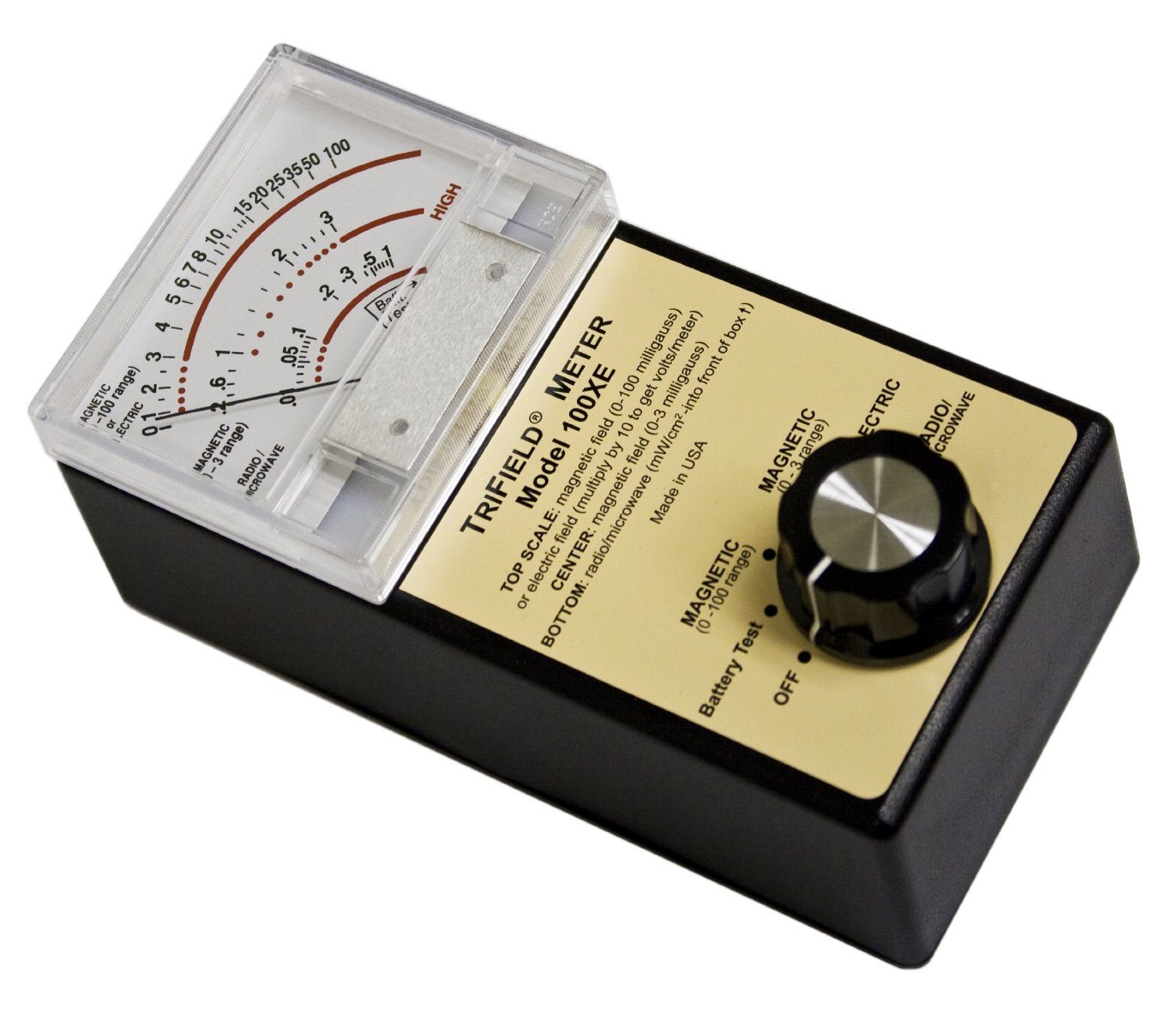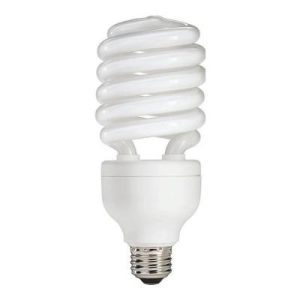Health authorities have identified Electromagnetic Frequency (EMFs) as potentially carcinogenic, meaning they may cause cancer. Read Dr. Matthew Buckley’s article tying chronic inflammatory diseases to EMFs, GMOs, and Vaccines.
EMFs from cell phones, smart meters, WiFi and other electronic devices have received increased scrutiny in recent years as science has caught up with what was once considered a conspiracy theory.
In fact, more than 80% of countries polled by the World Health Organization (WHO) have some sort of legislation related to exposure of electromagnetic fields.
Now, as proven in the video below, we know that certain kinds of light bulbs in our home emit cancer causing EMFs as well.
Check out this 2-minute video below to see which light bulbs to avoid and how you can protect you and your family against cancer.
For more health-related videos like this that the United States government doesn’t want you to see…like and follow www.facebook.com/tonyshealthtips
You can check out your home and light bulbs if you buy the exact meter that Tony is using on Amazon:

Sources: Repacholi MH, Cardis E (1997) Criteria for EMF health risk assessment. Radiation Protection Dosimetry, 72:305-312; Repacholi MH (ed) (1998) Low-level exposure to radiofrequency electromagnetic fields: health effects and research needs. Bioelectromagnetics, 19:1-19; McKinlay AF and Repacholi MH (eds) (1999) Exposure metrics and dosimetry for EMF epidemiology. Radiation Protection Dosimetry, 83(1-2):194; Repacholi MH and Greenebaum B (eds) (1999) Interaction of static and extremely low frequency electric and magnetic fields with living systems: Health effects and research needs. Bioelectromagnetics, 20:133-160; Foster KH, Vecchia P, Repacholi MH (2000) Science and the precautionary policy. Science, 288:979-981; Kheifets L (2001) Electric and magnetic field exposure and brain cancer. Bioelectromagnetics 5: S120-S131; Kheifets L (2001) Electric and Magnetic Fields and Occupational Health. Patty’s Industrial Hygiene and Toxicology, Fifth Edition 100: 141-198; Kheifets L, Greenberg R, Neutra R, Hester G, Poole C, Rall D, Banerjee G (2001) From epidemiology to policy: An EMF case study. American Journal of Epidemiology 154(12): S50-59; Kheifets L, Hester G, Banerjee G (2001) The Precautionary Principle and EMF: Implementation and Evaluation. Journal of Risk Research 4(2): 113-125; Mezei G, Kheifets L (2001) “Is There any Evidence for Differential Misclassification or Bias Away from the Null in the Swedish Childhood Cancer Study?” Letter to the Editor, Epidemiology 12(6):750; Repacholi MH (2001) Health risks from the use of mobile phones. Toxicology Letters 120: 323-331; Foster KR, Osepchuk JM, and Repacholi MH (2002) Environmental impacts of electromagnetic fields from major electrical technologies. Environmental Health Perspectives; Goldstein LS, Kheifets L, van Deventer TE, Repacholi MH (2002) Comments on the paper “Long-term exposure of Em -Pim1 transgenic mice to 898.4 MHz microwaves does not increase lymphoma incidence” Radiation Research. Radiation Research 158: 357-364; Goldstein LS, Kheifets L, van Deventer TE, Repacholi MH (2002) Further comments on “Long-term Exposure of E&mgr;-Pim1 Transgenic Mice to 898.4 MHz Microwaves Does Not Increase Lymphoma Incidence” by Utteridge et al., Radiation Research 158, 357-364 (2002); Kheifets L, Thrall N (2002) Electromagnetic Fields and Health. Macmillians Guide to Pollution; Litvak E, Foster KR, and Repacholi MH (2002) Health and safety implications of exposure to electromagnetic fields in the frequency range 300 Hz to 10 MHz., Bioelectromagnetics, 23(1):68-82; Mezei G, Kheifets L (2002) Clues to the possible viral etiology of childhood leukemia. Technology 9: 3-14; Repacholi MH (2002) Assessment of the Health Effects of EMF Exposure. The Radio Science Bulletin 301: 14-24; Sahl J, Mezei G, Kavet R, McMillan A, Silvers A, Sastre A, Kheifets L (2002) Occupational magnetic field exposures and cardiovascular mortality in a cohort of electric utility workers. American Journal of Epidemiology 156:913-918; Goldstein LS, Kheifets L, van Deventer E, Repacholi M. (2003) Comments on “Long-term exposure of Emicro-Pim1 transgenic mice to 898.4 MHz microwaves does not increase lymphoma incidence” by Utteridge et al., Radiat. Res. 158, 357-364 (2002). Radiat Res. 2003 Feb;159(2):275-6; author reply 276-8. No abstract available; Goldstein LS, Kheifets L, Van Deventer E, Repacholi M. (2003) Further comments on “Long-term exposure of Emu-Pim1 transgenic mice to 898.4 MHz microwaves does not increase lymphoma incidence” by Utteridge et al. (Radiat. Res. 158, 357-364 2002). Radiat Res., 2003 Jun;159(6):835; author reply 835-6. No abstract available; Dewhirst MW, Lora-Michiels M, Viglianti BL, Dewey WC, and Repacholi MH (2003) Carcinogenic effects of hyperthermia. International Journal of Hyperthermia, 19(3):236-25; Goldstein LS, Dewhirst MW, Repacholi MH, and Kheifets L (2003) Summary, conclusions and recommendations: adverse temperature levels in the human body, International Journal of Hyperthermia, 19(3):373-384; Kheifets L, Repacholi MH, and Saunders R (2003) Thermal stress and radiation protection principles. International Journal of Hyperthermia, 19(3):215-224; McKinlay A, Repacholi MH (2003) (eds) Weak electric fields effects in the body. Radiation Protection Dosimetry 106 (4) 2003; Repacholi MH (2003) WHO’s health risk assessment of ELF fields. Radiation Protection Dosimetry, 106(4):297-299; Riadh W. Habash Y, Brodsky LM, Leiss W, Krewski D, Repacholi MH (2003) Health Risks of Electromagnetic Fields. Part I: Evaluation and Assessment of Electric and Magnetic Fields. Critical Review in Biomedical Engineering, 31(3&4):219–273; van Deventer TE, Repacholi MH (2004) Effet de la Téléphonie mobile su la santé humaine: état des connaissances scientifiques, Droit de l’environnement dans la pratique, 8, 708-724; Repacholi M, Saunders R, van Deventer E, Kheifets L. (2005) Guest editors’ introduction: is EMF a potential environmental risk for children? Bioelectromagnetics, 2005;Suppl 7:S2-4. No abstract available; Kheifets L, Repacholi M, Saunders R, van Deventer TE (2005) Sensitivity of Children to Electromagnetic Fields, Pediatrics, August 2005, 303-313; van Deventer TE, Saunders R, Repacholi MH (2005) WHO health risk assessment process for static fields, Progress in Biophysics and Molecular Biology, 87, 355-363; Kheifets L, Repacholi M, Saunders R, van Deventer E, (2005) The sensitivity of children to electromagnetic fields. Pediatrics, 2005 Aug;116(2):e303-13; Kheifets L, Sahl J, Shimkhada R, Repacholi MH (2005) Developing policy in the face of scientific uncertainty: interpreting 0.3 µT or 0.4 µT cut points from EMF epidemiologic studies, Risk Analysis, 25 (4), vol. 5, no.1, 927-935; Kheifets L, van Deventer TE, Lundel G, Swanson J (2006) Le principe de précaution et les champs électriques et magnétiques : mise en œuvre et évaluation, Environnement, risques et santé, Jan-Feb 2006, 43-53; van Rongen E, Saunders R, van Deventer TE, Repacholi MH (2006) Static fields: Biological effects and mechanisms relevant to exposure limits. Health Physics, June 2007, vol. 92, no. 6, 584-590; Valberg P, van Deventer TE, Repacholi MH (2007) Workgroup Report: Base Stations and Wireless Networks: Radiofrequency (RF) Exposures and Health Consequences. Environmental Health Perspectives, March 2007, vol. 115, no. 3, 416-424′.





